#axial flux EV
Text
Mercedes' Vision One Eleven Concept Is a Retro-Futuristic Beast
It’s been 54 years since Mercedes launched their C111 concept car, and the 1969 engineering wonder helped introduce concepts such as turbocharging to the market. It was a revelation to the car industry, and apparently one of Mercedes’ proudest achievements.
So it’s with excitement that the company introduces the follow up, the Vision One Eleven. Matching the original’s copper-infused orange…
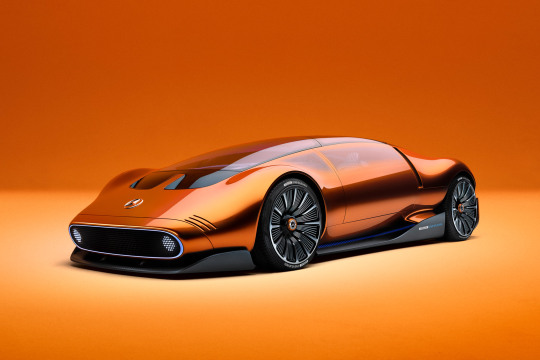
View On WordPress
#axial flux#axial flux EV#EV#EV concepts#Mercedes One Eleven#Mercedes Vision#Mercedes Vision One Eleven#Vision One Eleven#YASA
0 notes
Text
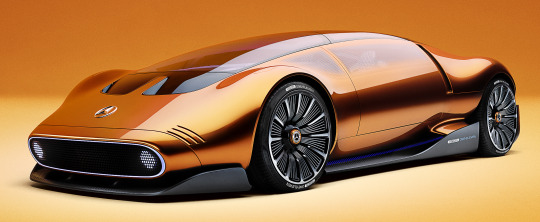




Mercedes-Benz Vision One-Eleven, 2023. A sports car study that looks to the future whilst drawing on the Mercedes concepts from the past. It is powered by lightweight and compact axial-flux electric motor technology. The car uses augmented reality so that the driver can use headset to turn the entire car into a user interface allowing you to see through the A-pillars. The design references the C-111 concepts of the late 60s and 70s
#Mercedes-Benz#Mercedes-Benz Vision One-Eleven#Mercedes-Benz C-111#2023#futuristic#concept#prototype#EV#electric car#axial-flux ev#gullwing doors
283 notes
·
View notes
Text
Design and manufacture of axial flux permanent magnet motors
Axial flux motors are extremely high efficiency motors where low form factor is essential. The applications for such stators are in Elevator Traction Motors (Roomless elevator design), Direct Drive Appliance Motors, EV Motor Applications,etc.
YOUYOU has developed a unique technology to manufacture axial flux motor cores.
Diameter range:20mm to 2 meter.
Email: [email protected]
Whatsapp:086-18826897469
Web: https://www.istator.com/axial-flux-stator.html
2 notes
·
View notes
Text
Axial Flux Motor Market – Forecast (2023-2028)
Axial Flux Motor Market Report Overview
The Axial Flux Motor market size is forecast to reach USD 1387.7 million by 2030, after growing at a CAGR of 11.8% during the forecast period 2024-2030. Axial flux motors are suited for applications that require a high torque density in a small footprint. Axial flow drives are also known as flattened and pancake electrically commutated motors due to their extremely low axial length-to-diameter ratio. It delivers more torque and power density than radial flux motors while using the same electrical components. When an axial flux motor has this feature, the battery lasts longer, making these motors more economically viable.
Axial flux motors are being used more frequently in a variety of new industries, including electric bikes, delivery vehicles, airport pods, electric cars, and even airplanes owing to the recent technology breakthroughs and a push towards electrification. The axial flux type was the first motor to be created in history. Therefore, it is difficult to imagine that these motors have found such a wide range of applications in the past two decades. First, it was extensively utilized for storage needs in the agricultural industry and elevators. Additionally, as axial flux motors are more efficient than radial motors, the market for them is expected to create considerable profits over the course of the projection period. Compared to a radial motor, this motor's small length offers great torque over speed. Additionally, when employed in the automotive industry, its small size and low weight reduce the weight of automobiles. In 2022, North America held 34.54% market share of the axial flux motor market, and is expected to grow at a significant compounded annual growth rate of 11.9% during the forecast period (2023-2030). The region is a hub for electric vehicle (EV) manufacturing and innovation, with automakers increasingly adopting axial flux motors for their EVs. Additionally, the growing renewable energy sector, including wind power projects, contributes to the demand for these motors. Asia Pacific, led by China, is a rapidly growing market for axial flux motors, driven by its extensive manufacturing capabilities and increasing adoption of electric vehicles. With the ever-expanding adoption of electric vehicles (EVs) in the region, China has emerged as a global leader in the EV market, which in turns fuels the demand for axial flux motors to new heights.
Furthermore, using axial motors minimizes vehicle weight by reducing the amount of space occupied by machinery. Transportation corporations' growing investment in the electric vehicle market would give substantial growth opportunities for the Axial Flux Motor Market. Product demand is expected to benefit from a growing focus on refining design and manufacturing processes in order to produce better products with greater efficiency, which further enhances the industry expansion for permanent magnet synchronous motors. Rising awareness of environmental preservation around the world is predicted to boost the adoption of electric vehicles and heat recovery ventilation, which will drive axial flux motor demand in 2024-2030.
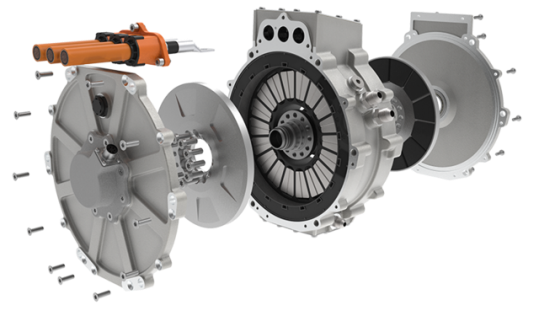
Report Coverage
The report “Axial Flux Motor Market – Forecast (2024-2030)”, by IndustryARC, covers an in-depth analysis of the following segments of the Axial Flux Motor market.
By Cooling Process: Air Cooling, Liquid Cooling.
By Power: 1kw-15kw, 15kw-80kw, 80kw-160kw, Above 160kw.
By Application: Electric Passenger Vehicles, Commercial Vehicles, Industrial Machinery, Elevators, Robotics Actuators, and Propulsion Systems, Aircrafts & Electric Glider Planes, Yachts & Electric Boats, Electric Drones, Others.
By End-User Industry: General Manufacturing, Power, Construction, Automotive, Aerospace, Marine, Agriculture, Others.
By Geography: North America, South America, Europe, APAC, and RoW.
Key Takeaways
• The Electric Passenger Vehicles segment is expected to grow at a CAGR of 12.6% during the forecast period 2024-2030 owing to the increase in government initiatives and key players strategic approaches to maintain the dominance.
• Automotive dominated the Axial Flux Motor Market with a revenue of $238.06m in 2023 and is projected to reach $477.11m by 2030 and is also set to be the fastest-growing segment with a CAGR of 10.6% during the forecast period 2024-2030. Axial flux electric motors are in high demand across a variety of vehicle industries and across numerous geographical locations, thanks to the continuously developing automotive sector.
• Europe region is dominating the Axial Flux Motor Market with revenue of $186.68 m in 2023 and is estimated to grow at a CAGR of 11.9% during the forecast period of 2024-2030 to generate a revenue of $405.55m in 2030. The government's aggressive measures for the adoption of electric vehicles have aided the sector's massive growth throughout Europe.
• The growing demand for high power density axial flux motors is enhancing the industry expansion and is set to positively impact the market growth.
1 note
·
View note
Text
8 Types of Electric Motors that Power EVs

In the dynamic landscape of the automotive industry, electric vehicles (EVs) have emerged as a beacon of sustainability and environmental responsibility. At the heart of these cutting-edge vehicles lies a crucial component: the electric motor. These motors are the driving force, quite literally, behind the push for a cleaner, greener transportation future. Let's take a closer look at five prominent types of electric motors that propel electric vehicles into the future.
Brushed DC Motor: The brushed DC motor, a pioneer in the realm of electric propulsion, employs a coil of wire and brushes to conduct electricity, propelling the rotor into motion. Despite its simplicity and cost-effectiveness, the brushed DC motor faces challenges such as friction-related efficiency limitations and higher maintenance demands.
Brushless DC Motor (BLDC): Addressing the limitations of its brushed counterpart, the BLDC motor boasts electronic commutation, eliminating brushes and ushering in increased efficiency, reduced maintenance, and an extended lifespan. The higher manufacturing costs and complex control algorithms are a trade-off for the enhanced performance and power density that BLDC motors offer.
Induction Motor: Widely adopted in the electric vehicle industry for its simplicity and reliability, the induction motor operates by inducing a current in the rotor through electromagnetic fields. While it excels in ruggedness and reliability, challenges include lower efficiency at low speeds and light loads, requiring additional control electronics for optimal performance.
Permanent Magnet Synchronous Motor (PMSM): The PMSM, a stalwart in the electric vehicle domain, leverages permanent magnets on the rotor to synchronize with the stator's rotating magnetic field. This design choice results in high efficiency, superior power density, and efficient regenerative braking. However, challenges such as costs associated with permanent magnets and the need for complex control algorithms persist.
Switched Reluctance Motor (SRM): A less common but promising contender, the SRM operates on the principle of magnetic reluctance, offering a simple construction and robust design. However, efficient operation requires intricate control algorithms, and performance at high speeds may be limited, making SRMs less widespread in EV applications.
Each of these electric motor types brings a unique set of advantages and challenges to the table. The rising stars, such as BLDC and PMSM motors, are witnessing increased adoption in the electric vehicle sector, driven by their efficiency, precise control, and extended lifespan. Meanwhile, emerging contenders like axial flux and toroidal motors are captivating attention with their compact designs and unique capabilities.
In the ever-evolving landscape of electric mobility, the choice of electric motor becomes a pivotal decision for manufacturers. As technology advances, innovation in electric motor design will likely overcome current limitations, paving the way for even more efficient, powerful, and reliable electric vehicles cruising our roads. The journey towards a sustainable and electrifying future continues, driven by the relentless pursuit of cleaner and greener transportation solutions.
To read more, click here.
Discover the fascinating world of advanced electric vehicles and beyond with SearchEV, your ultimate gateway to awe-inspiring EV technology and much more!
0 notes
Text
Automotive Axial Flux Motors Market Analysis, Demand, Forecast 2022-2029
BlueWeave Consulting, a leading strategic consulting and market research firm, in its recent study, estimated global automotive axial flux motors market size at USD 131.57 billion in 2022. During the forecast period between 2023 and 2029, global automotive axial flux motors market size is to grow at a robust CAGR of 24.29% reaching a value of USD 485.07 billion by 2029. Significant trends are altering the industry landscape in the global automotive axial flux motors market. The increased demand for electric vehicles (EVs) has accelerated the adoption of axial flux motors due to their small size, high power density, and efficiency. The market is seeing a growth in R&D activity to improve the performance and reliability of axial flux motors. Also, advances in materials and manufacturing techniques are propelling the development of lightweight and cost-effective axial flux motors. The incorporation of cutting-edge technology like artificial intelligence and the Internet of Things (IoT) into automotive systems is increasing demand for axial flux motors in a variety of applications.
Global Automotive Axial Flux Motors Market – Overview
A particular design configuration of electric motors used in automobiles is referred to as automotive axial flux. In contrast to the more typical radial flux layout, the magnetic flux of the motor in this arrangement is parallel to the axis of rotation. Axial flux motors have a compact and effective design because the magnetic field moves from the motor's center to its perimeter or vice versa. A higher power-to-weight ratio, better cooling, and increased torque output are all made possible by this configuration. Due to their potential to provide superior performance, better efficiency, and space-saving benefits over conventional radial flux motors, automotive axial flux motors have drawn interest in electric vehicle applications.
Sample Request @ https://www.blueweaveconsulting.com/report/automotive-axial-flux-motors-market/report-sample
Impact of COVID-19 on Global Automotive Axial Flux Motors Market
The COVID-19 pandemic significantly impacted the global automotive axial flux motors market, causing widespread disruptions across the industry. Lockdown measures, supply chain disruptions, and reduced consumer spending have led to a decline in demand for automotive axial flux products. Manufacturers have faced challenges in sourcing raw materials and components, leading to production delays and increased costs. The closure of automotive plants and decreased vehicle sales have further dampened market prospects. However, the industry has shown resilience by adopting digital platforms for sales and exploring innovative strategies. As the world recovers from the pandemic, the automotive axial flux market is expected to gradually rebound, driven by the increasing adoption of electric vehicles and government initiatives supporting sustainable transportation.
Global Automotive Axial Flux Motors Market – By Vehicle Type
On the basis of vehicle type, global automotive axial flux motors market is divided into Passenger Cars, Light Commercial Vehicles, Medium & Heavy Commercial Vehicles, and Two Wheelers segments. The largest segment within this market is the Passenger Car segment, which includes a wide range of cars designed for personal transportation. These vehicles are commonly used by individuals and families for daily commuting and leisure purposes. Following the Passenger Car segment, the other significant segments in the market include Light Commercial Vehicles, which are smaller utility vehicles used for business purposes, and Medium & Heavy Commercial Vehicles, which are larger trucks and buses used for commercial transportation. Also, the Two Wheeler segment comprises motorcycles and scooters, providing an alternative mode of transportation for individuals.
Competitive Landscape
Global automotive axial flux motors market is fiercely competitive. Major companies in the market include Magnax BV, YASA Limited, Traxial BV, Nidec Corporation, Saietta Group, EMRAX, Evans Electric, Whylot Electromechanical Solutions, Agni Motors Ltd, Turntide Technologies, Lucchi R., Protean Electric, Elaphe Propulsion Technologies, Brusa Elektronik AG, and PML Flightlink Ltd. Companies use various strategies, including increasing investments in their R&D activities, mergers, and acquisitions, joint ventures, collaborations, licensing agreements, and new product and service releases to further strengthen their position in global automotive axial flux motors market.
Contact Us:
BlueWeave Consulting & Research Pvt. Ltd
+1 866 658 6826 | +1 425 320 4776 | +44 1865 60 0662
0 notes
Text
Mercedes-Benz showcases axial flux EV motor in One-Eleven concept car
2023-06-15 14:00:00Mercedes-Benz showcases axial flux EV motor in One-Eleven principle automobileThe brand-new electrical motor is a 3rd the size and mass of a standard EV motor …
it’s really orange–
The brand-new electrical motor is a 3rd the size and mass of a traditional EV motor.
Jonathan M. Gitlin
– Jun 15, 2023 2:00 pm UTC
Expand / Formula 1 battery tech and light, compact, however…
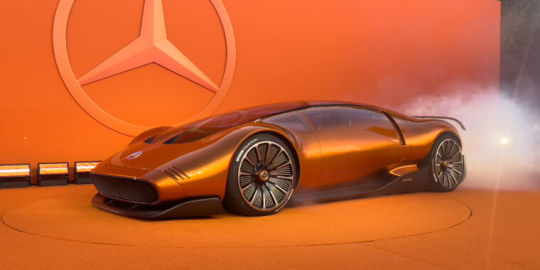
View On WordPress
0 notes
Link
#800V#900V#Cyclopic#e-axle#e-axlemodules#electricmotor#ElectricVehicle#Equipmake#EV#Futurride#HitachiAstemo#InfinitumElectric#LinearLabs#Lucid#Mercedes-Benz#rareearthmaterials#Renault#StrategyAnalytics#sustainablemobility#TechInsights
0 notes
Text
How Mercedes and Ferrari plan to ace the performance EV race: Explained - Times of India
How Mercedes and Ferrari plan to ace the performance EV race: Explained – Times of India
We have all heard the term ‘there is no replacement for displacement’, however, this does not stand true anymore in the current EV age. In fact, with electric vehicles what holds tru is ‘the smaller the better.’ At least that is what performance oriented automakers such as Mercedes-AMG and Ferrari believe. Introducing the ‘axial flux motors’, which are much smaller than the widely used radial…
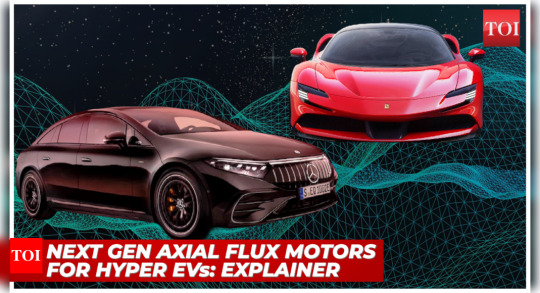
View On WordPress
0 notes
Photo

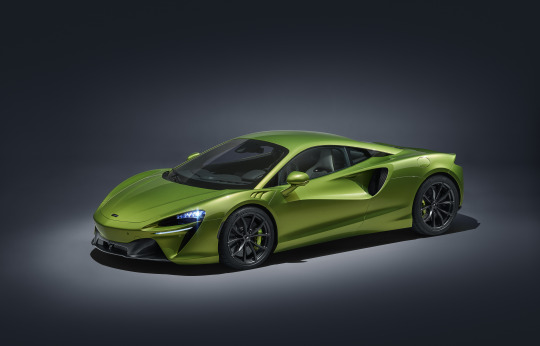

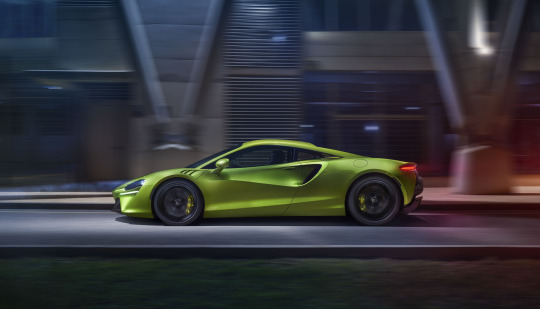
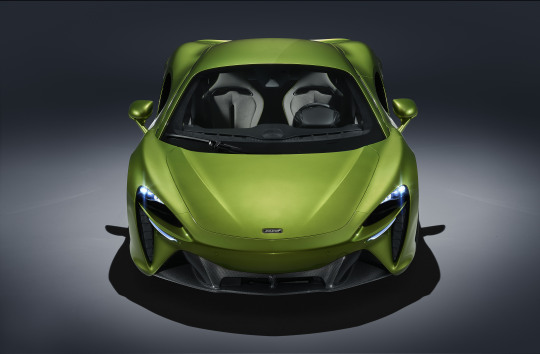

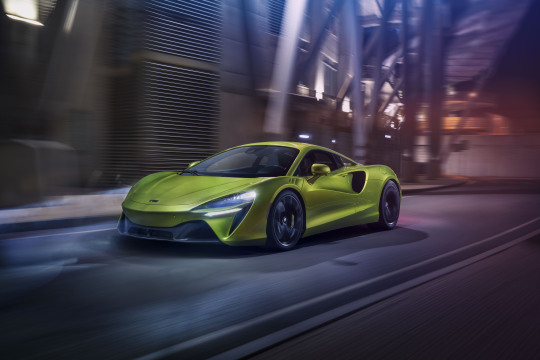
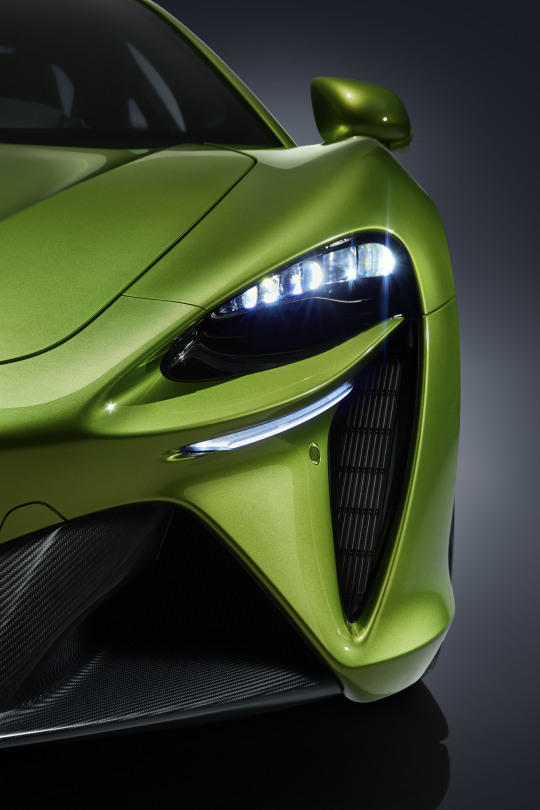
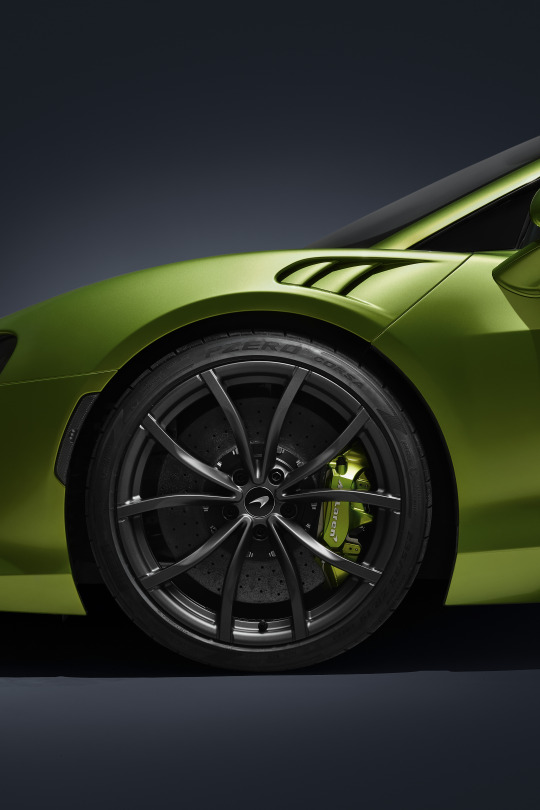

First Look: The McLaren Artura
The all-new McLaren Artura is revealed today, marking the beginning of both a new chapter for the pioneering luxury supercar company and a new era in supercar technology and performance.
McLaren’s first series-production High-Performance Hybrid supercar focuses more than half a century of the company’s racing and road-car experience and expertise into a next-generation supercar that blends ground-breaking technology with pure driver engagement.
Underpinned by the McLaren philosophy of super-lightweight engineering, the all-new Artura is the distillation of every attribute inherent in a McLaren – distinctive design, unrivalled performance, dynamic excellence and engineering innovation – with electrification now bringing the additional benefits of even faster throttle response, lower emissions and being able to run in pure EV mode for emissions-free journeys of up to 30km.
All-new from the ground up, the Artura presented McLaren engineers and designers with new opportunities to innovate, chief among these being how to preserve McLaren’s super-lightweight engineering philosophy when adding hybrid powertrain elements including an E-motor and battery pack.
At the heart of the Artura’s powertrain is McLaren’s all-new, 2,993cc twin-turbocharged V6 petrol engine. With a power output of 585PS – nearly 200 PS per litre – and 585Nm of torque, the dry-sump aluminum engine is compact and lightweight; at just 160kg it weighs 50kg less than a McLaren V8 and is significantly shorter, enhancing packaging efficiency.
Working in harmony with the new V6 is the Artura’s compact axial flux E-motor, located within the transmission bell housing. Smaller and more power-dense than a conventional radial flux E-motor, it is capable of generating 95PS and 225Nm and boasts a power density per kilo 33% greater than the system used in the McLaren P1. The instantaneous nature of the motor’s torque delivery – known as ‘torque infill’ – is key to the car’s razor-sharp throttle response. Exhilarating ‘off-the-line’ performance sees the Artura achieve 0-100km/h (0-62mph) in just 3.0 seconds, with 0-200km/h (0-124mph) taking 8.3 seconds and 0-300km/h (0-186mph) 21.5 seconds. The top speed is limited to 330km/h (205mph).
A demanding program of weight reduction, encompassing every area of the Artura from the chassis platform – this is the debut of the new McLaren Carbon Lightweight Architecture (MCLA) – through the uniquely compact HPH powertrain system to the weight of cabling used in the electrical systems (where a 10% reduction was achieved), resulted in the Artura having a lightest dry weight of 1,395kg. The total weight of hybrid components is just 130kg (which includes an 88kg battery pack and 15.4kg E-motor), resulting in a DIN curbweight of 1,498kg* which is on par with comparable supercars that do not have hybrid powertrains, giving the Artura a super-lightweight advantage.
146 notes
·
View notes
Text
Evolito’s electric motors look set to take off in aerospace where YASA left off in automotive
Evolito’s electric motors look set to take off in aerospace where YASA left off in automotive
Back in July, British “axial-flux” electric motor startup YASA was acquired by Mercedes-Benz for an undisclosed amount. YASA’s electric motors generated considerable EV industry interest because of their efficiency, high power density, small size and low weight.
Indeed, Rolls-Royce, best known in aviation for its jet engines, employed YASA engines in its all-electric airplane “Spirit of…

View On WordPress
0 notes
Text
Tesla Self Driving, Sarwant Singh joins Switch Mobility, Ruchira Green, Yamaha E01 electric scooter, Oppo EV
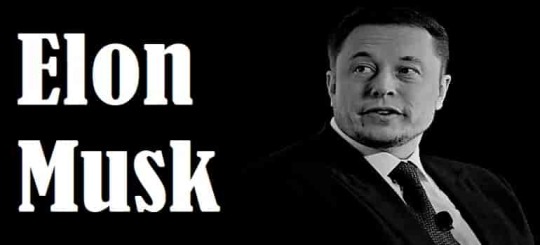
This week's EV News Wrap includes: Tesla Self Driving, Sarwant Singh joins Switch Mobility, Ruchira Green, Yamaha E01 electric scooter, Oppo EV and more
Tesla accepts Elon Musk's full self-driving claim not feasible yet
Despite tall claims made by Elon Musk over Twitter about the full self-driving technology, electric car-maker Tesla has privately admitted that such claims do not match up with the engineering reality.
Sarwant Singh joins Ashok Leyland’s Switch Mobility UK
Former managing partner at consulting firm Frost & Sullivan, Sarwant Singh, has joined Ashok Leyland-owned Switch Mobility UK as President (Corporate Planning), and CEO of the mobility service company of the Group, Ohm Global Mobility Pvt Limited reports Economic Times Auto
Ruchira Green Earth to invest Rs 200 crore to set up plant in Haryana
Lithium-ion batteries and allied products maker Ruchira Green Earth will invest Rs 200 crore over the next three or four years to set up a new manufacturing unit in Haryana to double its production capacity. The company is setting up a new unit at Yamuna Nagar in Haryana to fulfill the rising demand for its products, Ruchira Green Earth said in a statement.
Lion Electric to build new plant in Illinois, create 750 jobs
Canada based electric vehicle company Lion Electric said it had selected Illinois as the location for its new U.S. manufacturing plant, promising to invest at least $70 million and create about 750 jobs over the next two years.
American Axle, Israel's REE to develop electric-vehicle propulsion system
Automobile parts maker American Axle & Manufacturing and Israel's REE Automotive will jointly develop an electric propulsion system to tap accelerating demand for battery-powered vehicles, the companies said. The propulsion system, which powers automotive vehicles, will incorporate American Axle's electric drive units into Ree's technology that integrates all the traditional vehicle chassis components into the arch of the wheel.
Boom of electric car likely to cost the German auto industry more than lakhs of jobs
The boom of electric car likely to cost the German auto industry more than lakhs of jobs in combustion engine production by 2025 if companies fail to beef up efforts to re-skill workers, a survey by e Ifo institute showed. As battery-driven cars provide less assembly work than combustion engine vehicles, the shift towards e-mobility means that companies must now address the risk of unemployment due to skills mismatches and re-train employees, the Ifo institute said.
Saietta Group and Padmini VNA enters into strategic partnership to make electric motors
The manufacturer of axial flux technology electric motors Saietta Group has announced a partnership agreement with Padmini VNA, an Indian Tier 1 automotive supplier. As part of the agreement, the duo is to develop new opportunities within the rapidly expanding electric two-wheel market in India.
Chinese electric vehicle maker Nio launches in Norway, its 1st overseas store
Chinese electric vehicle maker Nio has announced that it haslaunched its first overseas store in Norway and plans to start selling cars in the country as it pushes to expand globally.
Yamaha Unveils Patent concept images of its upcoming E01 electric scooter
Yamaha has unveiled the concept images of its upcoming E01 electric scooter. The scooter was revealed as a concept at the Tokyo Motor Show in the year 2019 and is expected to be a replacement for a standard 125 cc scooter. Yamaha also registered trademark applications for the 'E01' name earlier this year.
Oppo gearing up to dive into the electric vehicle segment
After Xiaomi and Huawei its another Chinese smartphone company Oppo gearing up to explore the electric vehicle segment . According to the report the firm wants to build its own electric car. Oppo CEO Tony Chen speaking to a local publication said “Even in car manufacturing, we will focus on areas that OPPO can perform well. If automakers can’t build good cars and OPPO has the strength, we will try it in the future.”
Read the full article
#EVNewsWrap#OppoEV#RuchiraGreen#SarwantSinghjoinsSwitchMobility#TeslaSelfDriving#YamahaE01electricscooter
0 notes
Photo
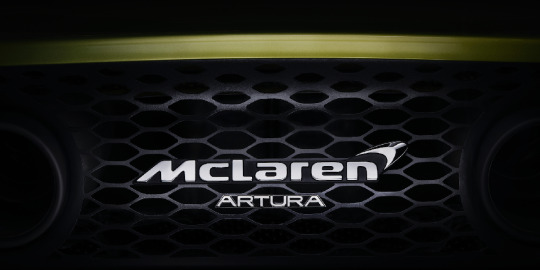
New Post has been published on https://www.vividracing.com/blog/mclaren-reveals-new-high-performance-hybrid-supercar-the-artura/
McLaren Reveals New High-Performance Hybrid Supercar: the Artura
The all-new McLaren Artura was revealed just the other day, marking the beginning of a new chapter for the groundbreaking luxury supercar brand and a new era in supercar performance. The Artura is McLaren’s first series-production High-Performance Hybrid supercar, blending revolutionary technology with the automaker’s commitment to pure driver engagement – all being drawn upon from its more than half a century of racing and road-car experience. This next-gen supercar is defined by McLaren CEO Mike Flewitt as being a “distillation of everything [they’ve] ever learned.”
Based on McLaren’s philosophy of ultra-lightweight engineering, the all-new Artura boasts the perfect harmony of every attribute inherent in its vehicles – distinctive styling, unparalleled performance, dynamic excellence, and advanced engineering. The electrification is the icing on the cake, now bringing with it additional benefits of even faster throttle response times, reduced emissions, and the ability to run in pure EV mode for up to 19 miles.
The McLaren Artura has perfect supercar proportions and spotlights a “form follows function” design philosophy with a lightweight body made from super-formed aluminum and carbon fiber throughout. It is also, notably, the first model to be manufactured using all-new McLaren Carbon Lightweight Architecture (MCLA), uniquely optimized for High-Performance Hybrid (HPH) powertrains and built in-house at the McLaren Composites Technology Centre (MCTC) in the Sheffield region. Thanks to the demanding weight reduction program, the Artura’s lightest dry weight is 3,075 pounds. The sum weight of the hybrid parts is just 287 pounds, resulting in a DIN curb weight of 3,303 pounds. These figures are on par with comparable supercars that do not have hybrid powertrains, giving the all-new ultra-lightweight Artura a leg up.
At the heart of the McLaren Artura’s powertrain is the brand’s all-new, 2,993cc twin-turbocharged V6 petrol engine. With a power output of 577 bhp – nearly 200 bhp per liter – and 431 lb.-ft. of torque. The dry-sump aluminum engine is lightweight and compact; and, at just 353 pounds it weighs 110 pounds less than the V8 and is 7.5 inches shorter. The six-cylinder engine is combined with an industry-leading axial flux electric motor (E-motor) and an all-new eight-speed transmission, and a lithium-ion battery pack. This results in the High-Performance Hybrid powertrain having a combined power output of 671 bhp and 531 lb.-gt. The Artura can reach 60 mph in just 3.0 seconds and go from zero to 186 mph in a mere 21.5 seconds.
All-new rear suspension gives the McLaren Artura sublime handling and split-second agility. The new geometry concept offers double the amount of stiffness of the first-gen design, adding the equivalent of hundreds of kilos of downforce. That combined with uprated electro-hydraulic steering and Proactive Damping Control enhances agility, stability, and dynamic performance for a remarkable driving experience. The Artura also sits on next-generation Pirelli P Zero Corsa tires with innovative Pirelli Cyber Tyre technology that offers exceptional grip levels comparable to the extreme P Zero Trofeo R tires on the McLaren 600LT.
Moving on to a completely redesigned and spacious interior, the Artura has all key controls accessible at your fingertips so you can keep your hands on the wheel and eyes on the road. A new 8-inch HD touchscreen infotainment system enables the configuration of advanced driver assistance systems (ADAS). Smartphone mirroring for both Apple and Android makes the cabin your ultimate escape while remaining connected to the fast-paced world we live in. Moreover, the groundbreaking electrical architecture allows for over-the-air updates and future upgrades for added convenience.
Check Out Vivid Racing’s Full Product Lineup for McLaren Here.
The McLaren Artura is available to order now with a choice of four specifications with U.S. pricing starting at $225,000 (including vehicle nose lift, power-folding mirrors, soft close doors, power-adjustable comfort seats, and Homelink as standard on all trims). Vivid Racing carries an impressive lineup of McLaren parts to help you take your ride to the ultimate level and customize it to your heart’s content. If you have any questions, please contact us by phone at 1-480-966-3040 or via email at [email protected].
0 notes
Text
Electric Vehicle Motor Market Synopsis and Highlights, Key Findings, Major Companies Analysis and Forecast to 2023
Market Synopsis:
The electric motor helps to convert electrical energy into mechanical energy for propulsion of the vehicle, with the objective of enabling regenerative braking or charging energies to generate electricity stored on board. Market Research Future (MRFR) has published a research report about the global Electric Vehicle Motor Market that anticipates hike for this Market at 20% CAGR (Compound Annual Growth Rate) during the forecast period between 2017 and 2023.
The key factor driving the global Electric Vehicle Motor Market growth is the increase in demand for improving the driving range of electric vehicles because the range of the electric vehicle heavily depends on the electric powertrain control systems. Other factors contributing to the Market growth include government regulations to reduce carbon emissions, the introduction of tax incentives, and government subsidies for electric vehicles (EV) manufacturers and end users in order to encourage the use of EV.
Request a Sample Report @ https://www.marketresearchfuture.com/sample_request/5385
The global Electric Vehicle Motor Market has been segmented on the basis of motor type, power rating, and lastly, region. By motor type, this Market has been segmented into Direct Current (DC) brushed motors, DC brushless motors, induction (asynchronous) motor, switched reluctance motor, and synchronous motor. Based on power rating, the Market has been segmented into below 40 Kilo Watt (KW), 40 KW-80 KW, and above 80 KW.
The regional segmentation of the global Electric Vehicle Motor Market can segment the Market into the regional markets known as North America, Europe, Asia Pacific, and rest of the world (RoW). During the forecast period, the Asia Pacific Market is expected to generate the highest revenue compared to other regional markets due to the rapid increase in production and Market of electric vehicles in countries China and Japan. The presence of many original equipment manufacturers (OEMs) is also boosting the Market growth. Another important country-specific Market is in India, followed by the remaining countries of the Asia Pacific region.
North America is another important regional Market due to the high disposable income of end users, established automotive industry, government regulations to regulate carbon emissions, large customer base, and the presence of many key Market players in this region. Essential country-specific markets in this region are Canada and the United States of America (USA).
Europe is a powerful regional Market due to the high density of population, government regulations to regulate carbon emissions and the presence of many key Market players. The crucial country-specific markets in this region are France, Germany, Italy, and the United Kingdom (UK), followed by the remaining countries of Europe.
Browse Report @ https://www.marketresearchfuture.com/reports/electric-vehicle-motor-market-5385
Key Players
The key players in the global Electric Vehicle Motor Market include Allied Motion Technologies Inc. (USA), BYD Auto Co. Ltd. (China), Continental AG (Germany), Denso Corporation (Japan), Hitachi Automotive Systems Ltd. (Japan), Metric Mind Corporation (USA), Mitsubishi Electric Corporation (Japan), Robert Bosch GmbH (Germany), Siemens AG (Germany), and Tesla Inc. (USA).
Latest Industry News
· Japanese precision motor maker company Nidec will expand a Chinese site still under construction in order to double capacity for electric vehicle motors due to Beijing's stronger environmental regulations. 15 FEB 2019
· Electric car startup Rivian has secured the US $ 700 mn in funding from an Amazon-led group of investors. The cash injection will help the Rivian to expand its operations and bring its electric UTE and SUV to Market by 2020. 18 FEB 2019
· YASA, the world’s leading manufacturer of axial-flux electric motors and controllers, has signed a long-term joint innovation agreement with a global automotive OEM. The partnership as per this agreement will focus on developing custom electric motor as well as controller solutions for the OEM’s high-performance hybrid and pure electric vehicles. 18 FEB 2019
0 notes
Text
High-Performing Axial Flux Motors Featuring YASA and Torque Sensor
High-Performing Axial Flux Motors Featuring YASA and Torque Sensor
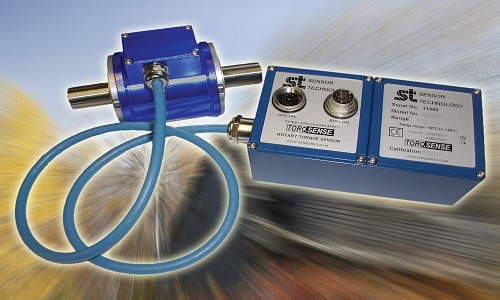

High-Performing Axial Flux Motors Featuring TorqSens Sensor For EVs
Incorporates Yokeless And Segmented Armature (YASA) motor topology Based on surface acoustic wave (SAW) technology with wireless connectivity Oxford YASA Motors, a company involved in commercialising the YASA motor developed by Oxford University’s Energy and Power Group is engaged in the development and manufacture a new type of…
View On WordPress
0 notes
Text
Ford Webasto Lithium Mustang EV: Three interesting facts we learned
By Joel Stocksdale
Electrification took on a much bigger role at this year's SEMA show than we expected, and one car that demonstrates this is the Lithium Mustang EV from Ford and Webasto. Though somewhat subtle on the outside, the skin covers an electric powertrain making over 900 horsepower and 1,000 pound-feet of torque. We spoke with a representative from Webasto and learned some more interesting tidbits about the car.
It's heavier, but balanced
Webasto used a 2019 Ford Mustang EcoBoost as the base for its electric conversion. Stock, that car weighs in at 3,542 pounds. According to the Webasto rep, the complete Lithium Mustang weighs about the same as a GT500, which tips the scales at 4,171 pounds. But most of that weight is in the batteries, which can be spread out. Webasto put about a third of the batteries under the hood with the motor, and the rest over the rear axle, which resulted in a perfect 50/50 front/rear weight balance. With the weight sitting over the rear axle, the Webasto representative explained that they felt it was unnecessary to have some sort of wing or spoiler to provide downforce for grip at the back.
The battery and motor system is advanced, but has an odd limitation
As we've mentioned, the Lithium Mustang EV has an 800-volt battery system that can rapidly discharge power, which is necessary for the beastly motor under the hood. Part of what makes that possible is the liquid cooling and heating system that can keep the batteries an an optimum temperature. The potent motors are of the axial flux design, which places magnets on the faces of the rotors, rather than on the periphery, allowing for a compact and power-dense package. One odd feature absent from the Lithium Mustang is DC fast-charging capability. It only supports Level 2 AC charging, but the Webasto representative said the company is working on DC charging support.
Ford Mustang Lithium EV at SEMA 2019
Autoblog Staff
Forget buying one
Sadly, we're not going to see a Webasto-designed electric Mustang on dealer floors anytime soon, nor is there a kit coming to make this a reality in the aftermarket. The representative explained that this was purely a concept for Ford and Webasto to show what's possible with electric powertrain technology, and Webasto won't be offering a kit for hobbyists. But Webasto is still developing electric tech, and plans to do some field testing on the Lithium Mustang to get performance and range numbers. The representative also said it will offer parts for the commercial sector and OEMs. So maybe we'll see some of the knowledge gained from this concept appear in a future electrified generation of Mustang.
This article originally appeared on Autoblog, the complete authority for news, reviews and car-buying research.
- Repost from: engadget Post
0 notes